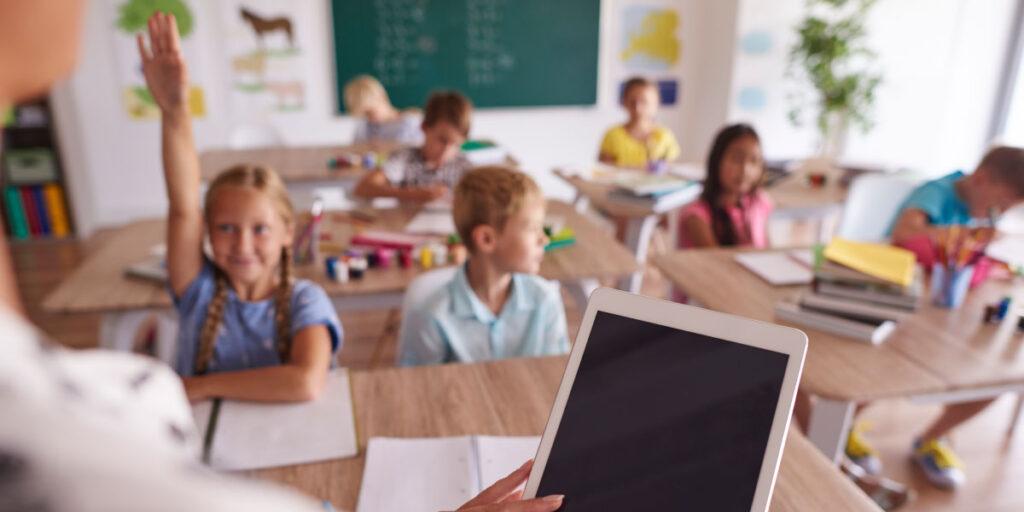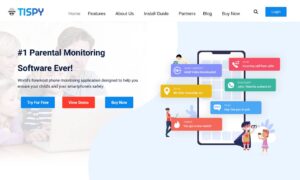Students and teachers today face a huge challenge – managing a fast developing technology while focusing on studies. Smartphones are everywhere, buzzing with alerts and notifications, and offering apps and games as endless distractions.
Teachers can see kids quickly checking their phones during lessons, and replying to messages on social media while working on school assignments.
This leads to fragmented attention spans, a disrupted learning process, and a lapse in concentration.
It also impacts social interactions, as students focus on screens rather than in-person conversations with classmates, which can affect the development of their interpersonal skills.
The challenge for educators is to find a balance between the educational benefits from technology and its distractions, and the solution to this is becoming important for academic success.
Why Teachers & Schools Need Monitoring Tools
In schools today, parental control apps are invaluable tools for teachers to monitor and keep students safe in the classroom.
These apps can help teachers to keep the focus on learning, avoiding distracting web platforms and unsuitable content. They can also give insights into inappropriate behavior such as cyberbullying, enabling teachers to identify issues and act before they become a real problem.
Benefits to individual safety and security are also linked to parental control apps. As online threats become more widespread, monitoring tools are important to protect students while teaching responsible internet usage.
Knowing that these tools are used in schools can give parents peace of mind, as teachers supervise online activities to ensure compliance with educational policies, and collaboration between parents and teachers to create an environment of digital safety benefits not only the classroom but also the whole community.
Overview of Multi-Device Monitoring
Usually a parental control app is used by a parent to track and monitor a child’s smartphone or similar device; however, in a classroom situation a teacher would require tools that provide multi-device monitoring for a number of students.
Multi-device management involves supervising and controlling various devices, including computers, smartphones, tablets, and similar devices, from a centralized dashboard or interface.
Fortunately a parental control app such as FamiGuard allows a user to monitor a variable number of devices depending on the chosen subscription plan. Generally, FamiGuard’s website offers plans that can monitor anywhere from 5 to 10 devices, depending on the specific plan. For example, a monthly subscription might allow a user to monitor 5 devices, while a quarterly or annual subscription might allow a user to monitor up to 10 devices, as explained on FamiGuard’s Help Center on their website.
Real-Time Location & Usage Reports
GPS (Global Positioning System) is a handy feature in Android and iOS-enabled mobile devices, and it allows parental control apps like FamiGuard to make real-time location tracking easier. These apps can help parents or school teachers monitor the kids’ activities when away or at work.
This also enables Geofencing, which is a way to set boundaries for the kids to stay within, with instant alerts if the boundary area is exceeded.
A key feature of a parental control app is the screen time and usage report, available on the user-friendly dashboard. Screen time reports can reveal which apps are most used, the number of notifications received, and the overall time spent on the device.
Famiguard Pro offers a wide range of these features, including phone files control, screen time management, and location tracking. It also provides a detailed screen time report, and uses bar charts to show the total time of all apps and the usage time ranking of each app.
By analyzing these reports, users can identify patterns, set limits, and better manage their time. For parents and teachers, these reports offer an effective way to monitor and control a child’s device usage, ensuring a safe and balanced digital environment.
FamiGuard Features That Help Teachers
A key feature of FamiGuard is real-time phone location tracking. This assists teachers when planning field trips or activities outside, and monitors the students’ location to ensure their safety.
The app also offers web filtering and app blocking, so teachers can track usage of inappropriate web sites, block students’ access to harmful content, and restrict apps and games that will be a distraction during school time.
App usage monitoring can give teachers information on what apps are being used by students and how long they are used for. This is useful when designing lessons that will keep students engaged academically, and not distracted by non-educational content.
FamiGuard’s screen time management feature helps to encourage better attention in class. Teachers can set limits on device usage during school hours, to prevent constant screen checking, and allowing time for learning and critical thinking.
FamiGuard provides teachers with tools to manage learning in a digital world, and helps to create a safe and focused learning environment, using the latest developments to teach and prepare students to be responsible technology users in the future.
Privacy & Consent in School Environments
FamiGuard provides tools that help parents to monitor their kids’ online activities and track their location, setting up screen time limits and web filters to avoid unsuitable content.
When these same tools are used in a school situation, it raises questions about privacy and individual rights.
Nevertheless, schools often use various technologies in the fields of security and education which can lead to conflict between academic needs and parental oversight,
The issue of consent is another important aspect, which has implications for monitoring children’s activities when at school. The school administrators need to have clear communication with parents about the technology being used, what data is collected, and how student privacy is being protected.
There needs to be a balance between the benefits of technology such as FamiGuard and the need for privacy and consent.
Ideally there should be open conversations between the school and parents about digital control and safety, with the best outcome being a supportive environment where children are monitored but feel protected and secure, and in a world fast being overtaken by the latest developments in computer technology, finding the solution to this issue is essential.



































